This document provides a summary of gang violence in the African American community and recommendations to prevent it. It defines the problem of gang violence and prevalence rates. African American gangs have high rates of violence despite lower membership. Factors that contribute to gang violence include poverty, lack of opportunities, and social disorganization. The document recommends that the mayor implement community outreach programs to reduce poverty and increase social and economic well-being, citing two specific programs as examples: Neighborhood Centers Inc. and Connecticut Association for Human Services. Both work to improve communities and move families out of poverty.
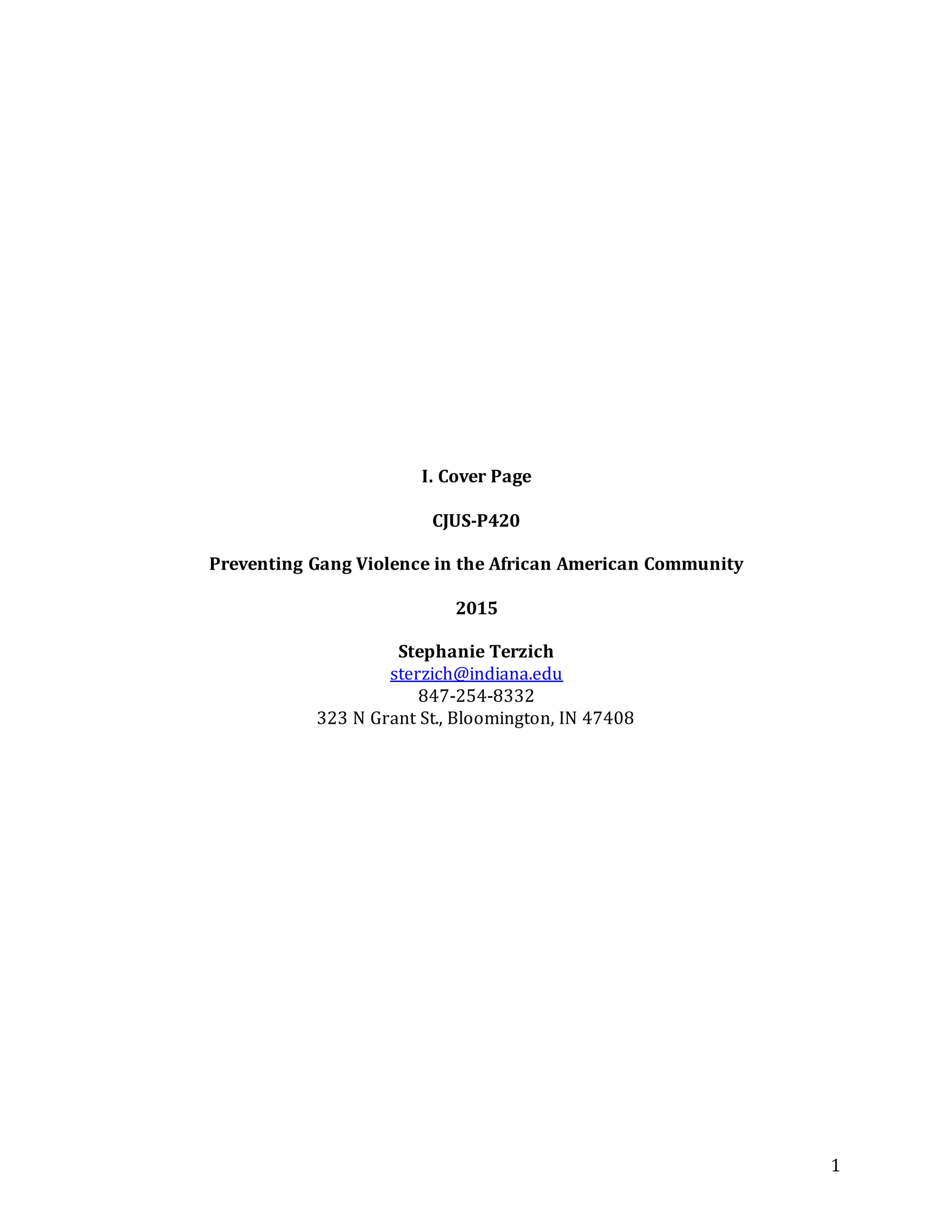
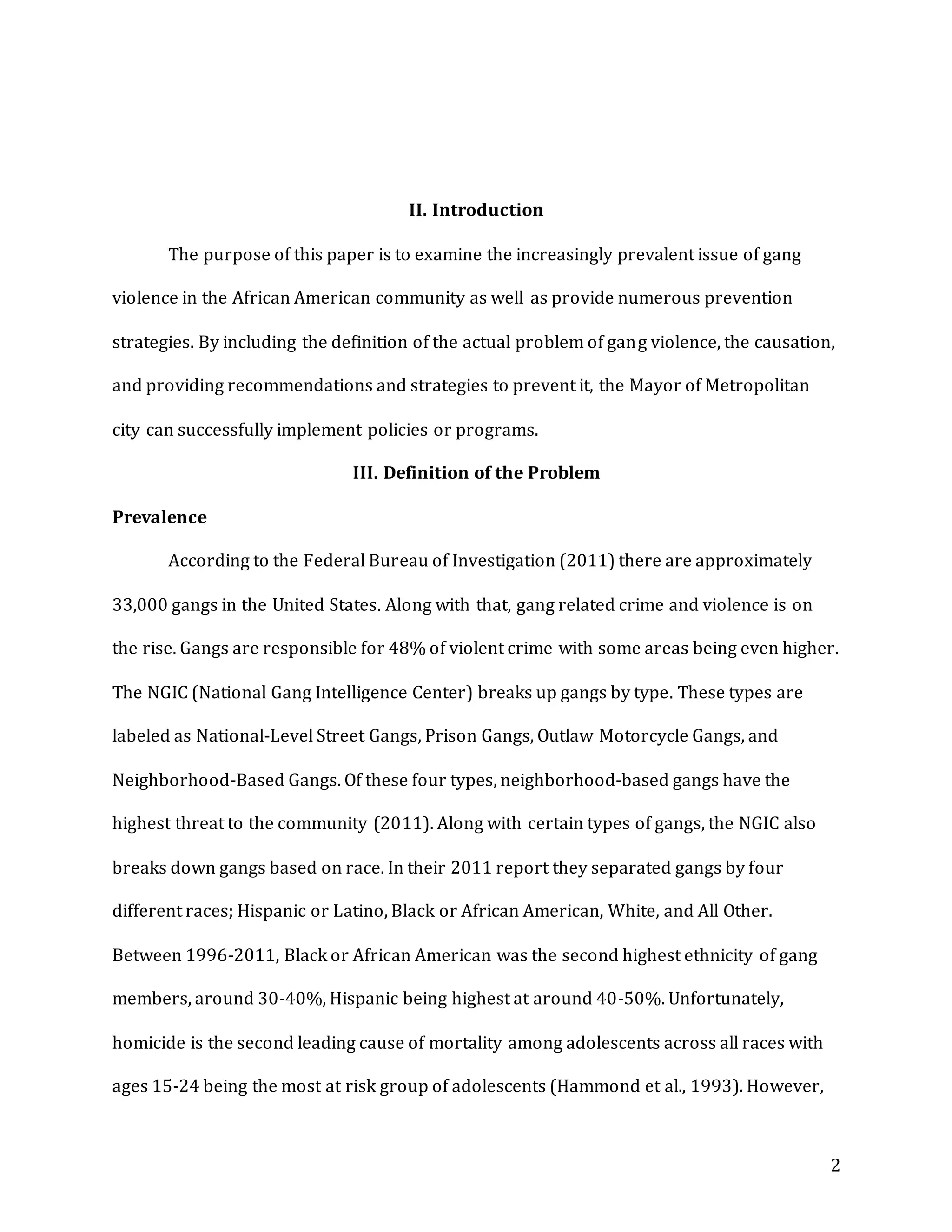
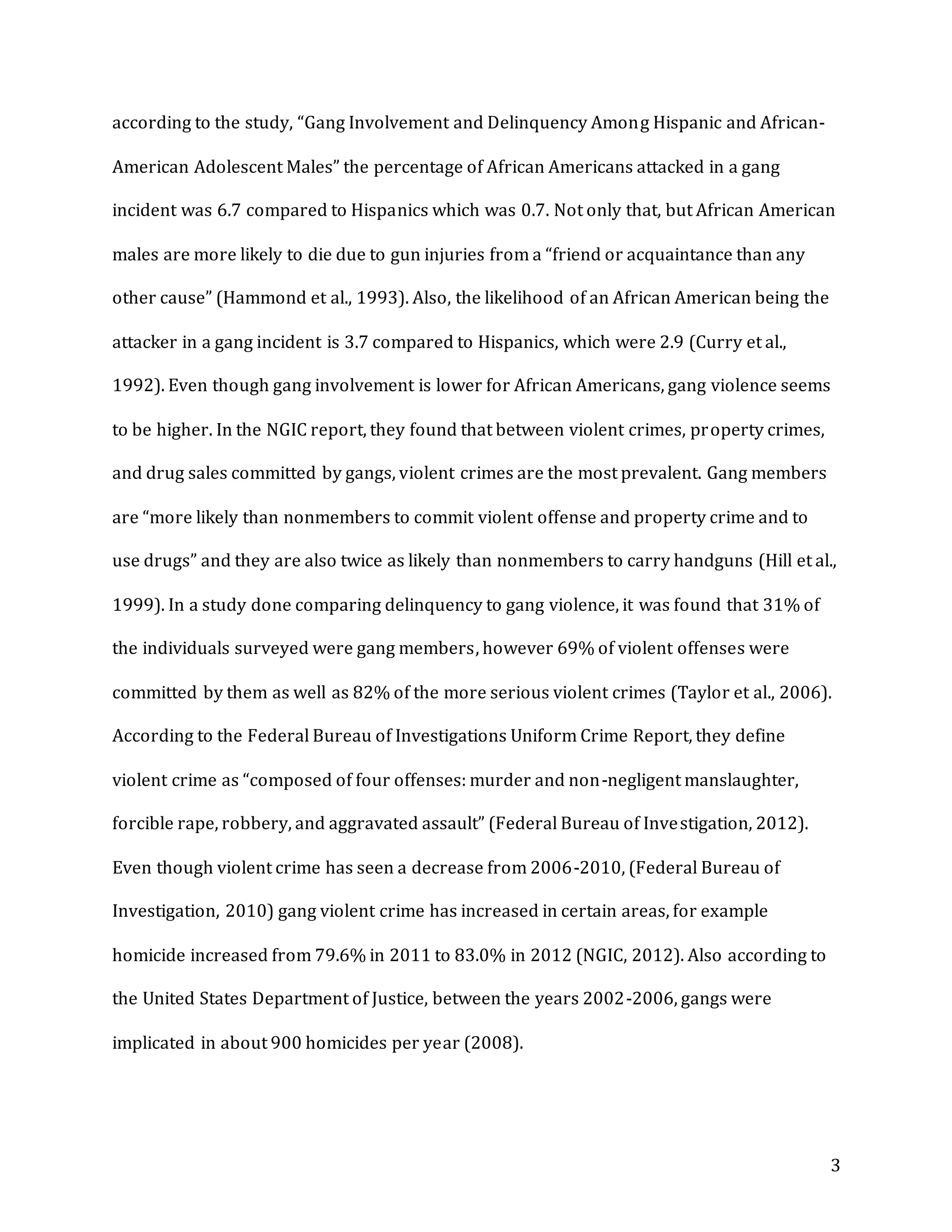
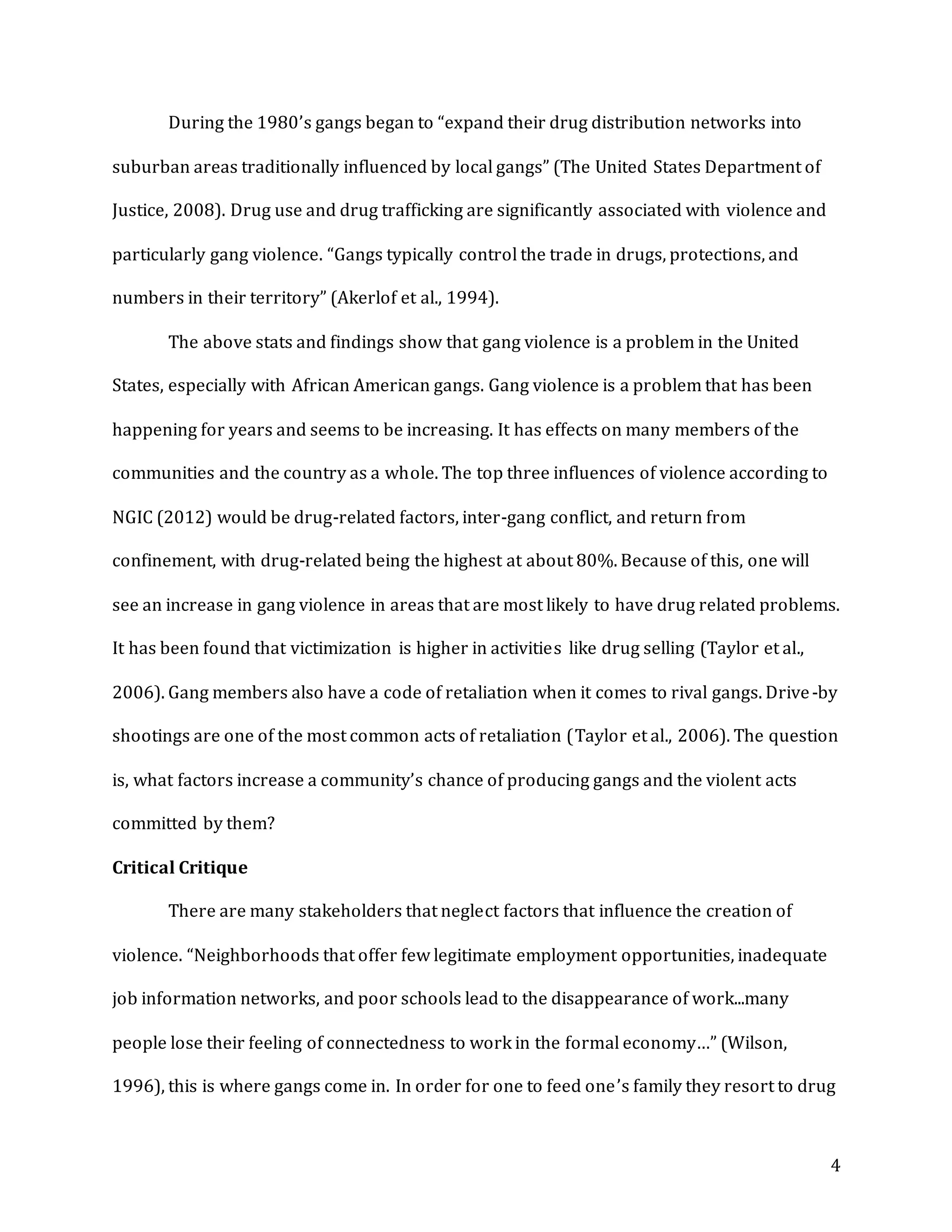

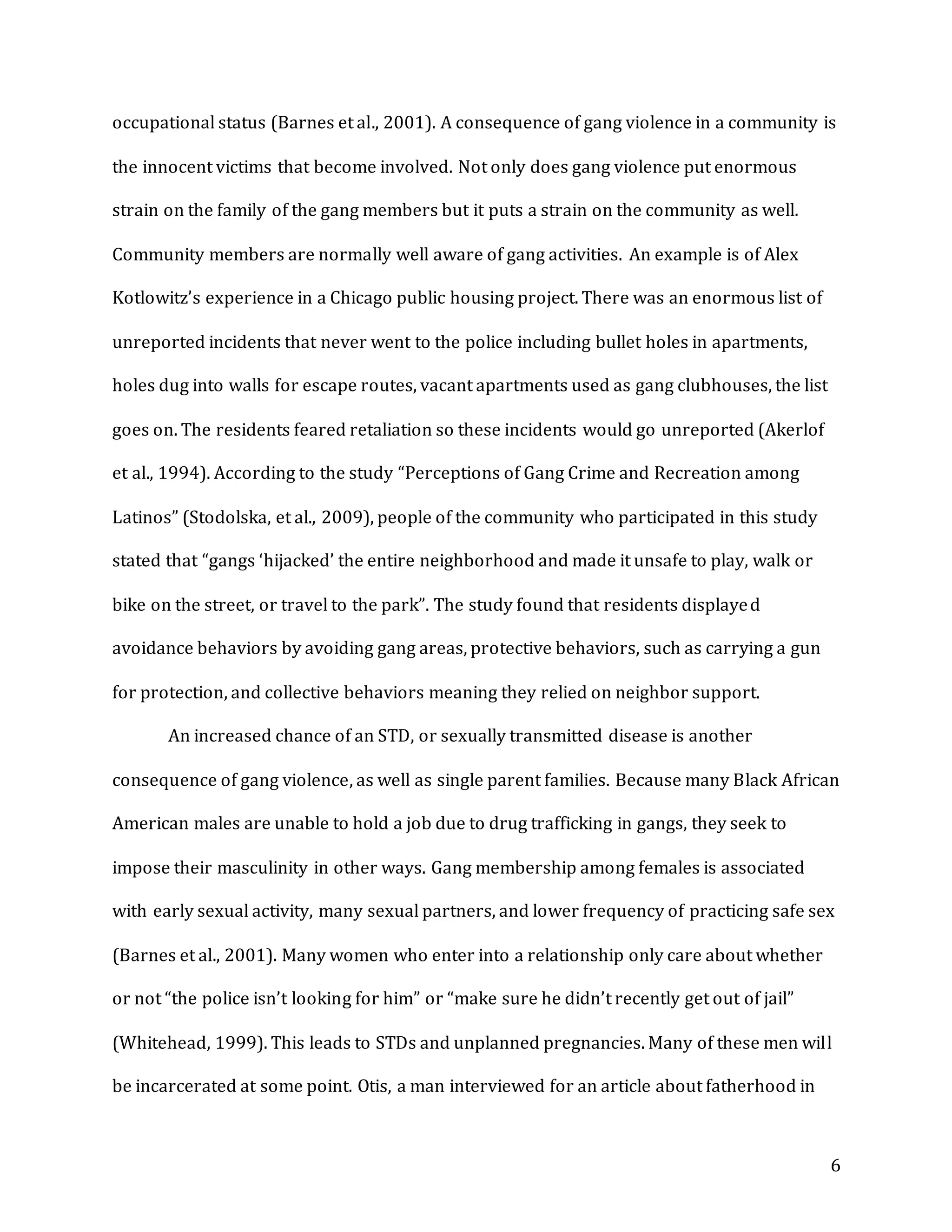
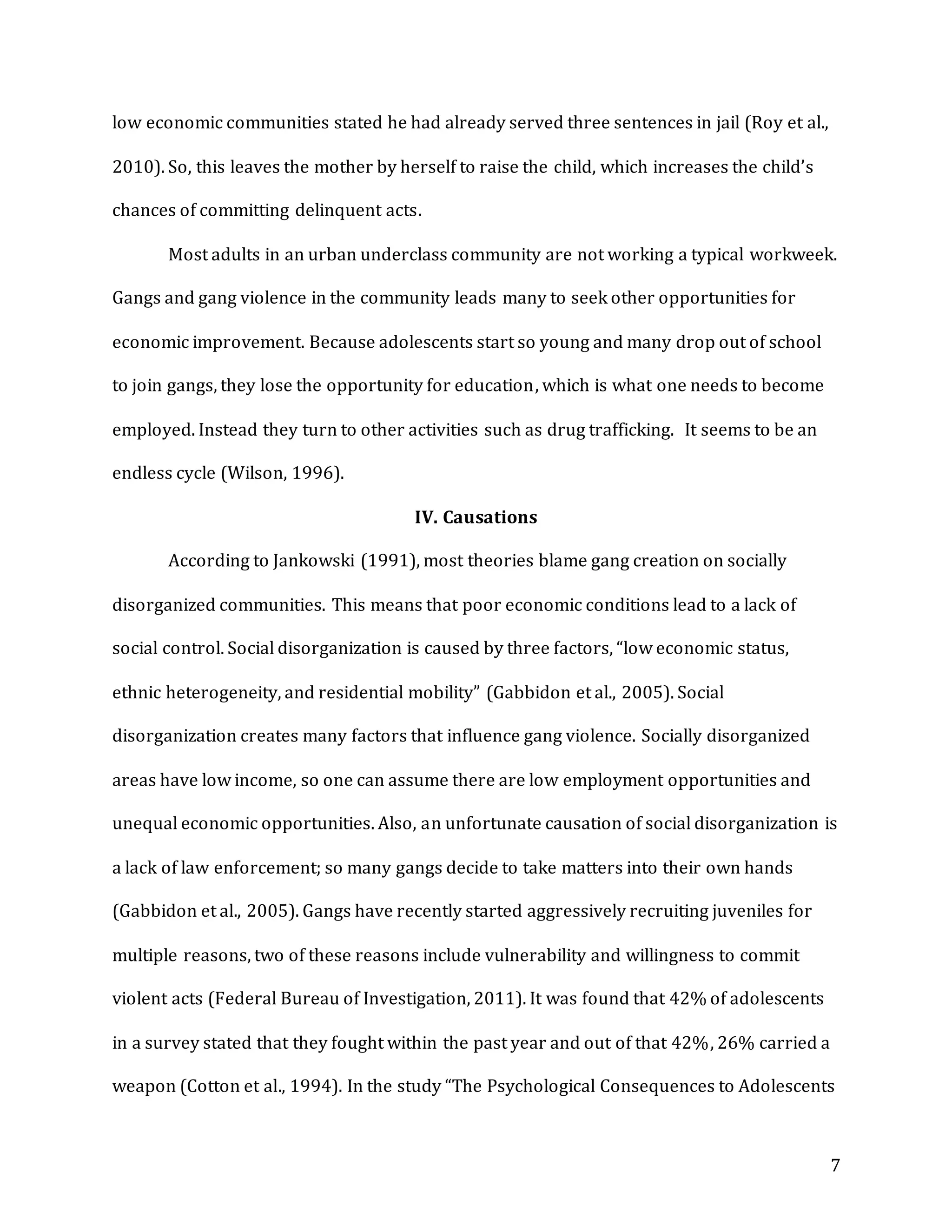
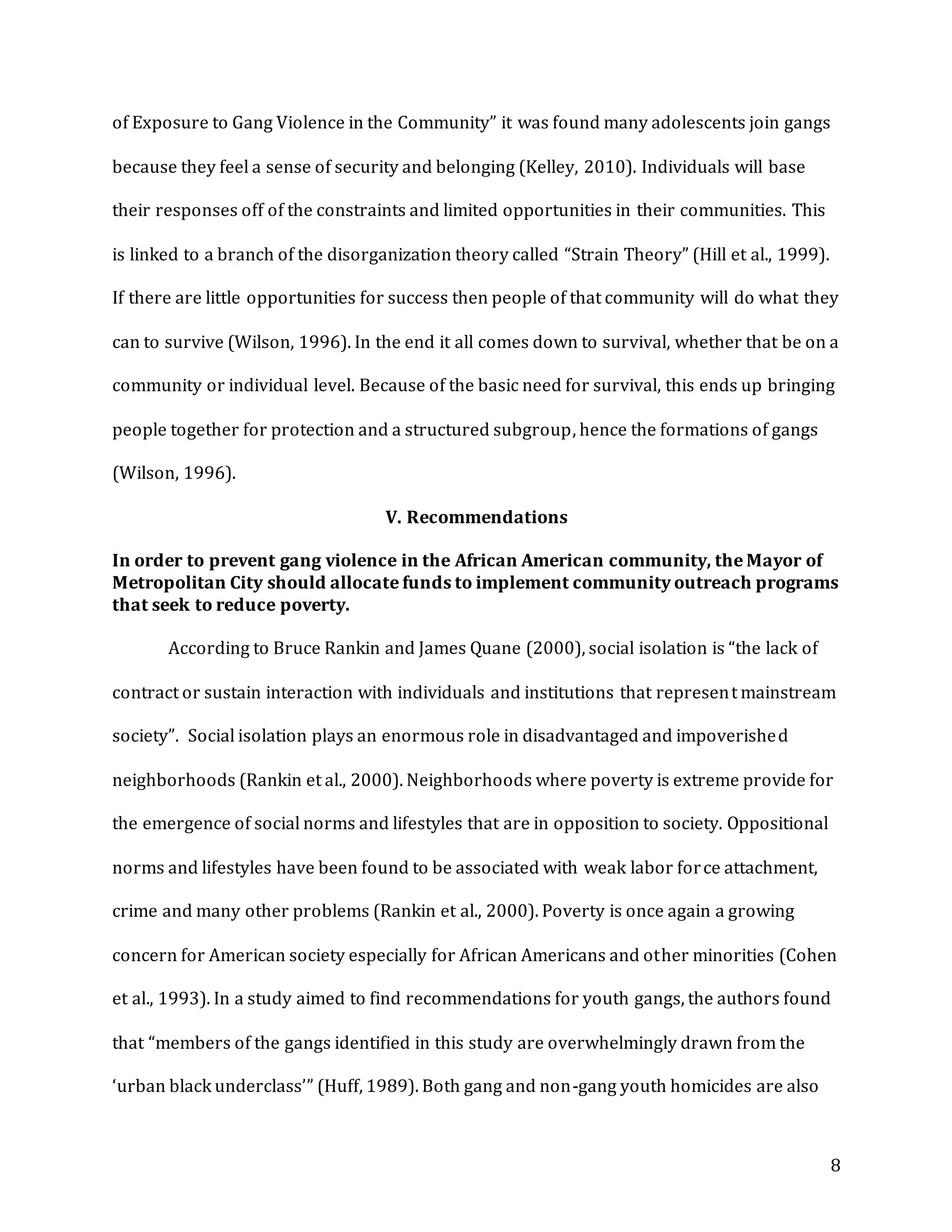
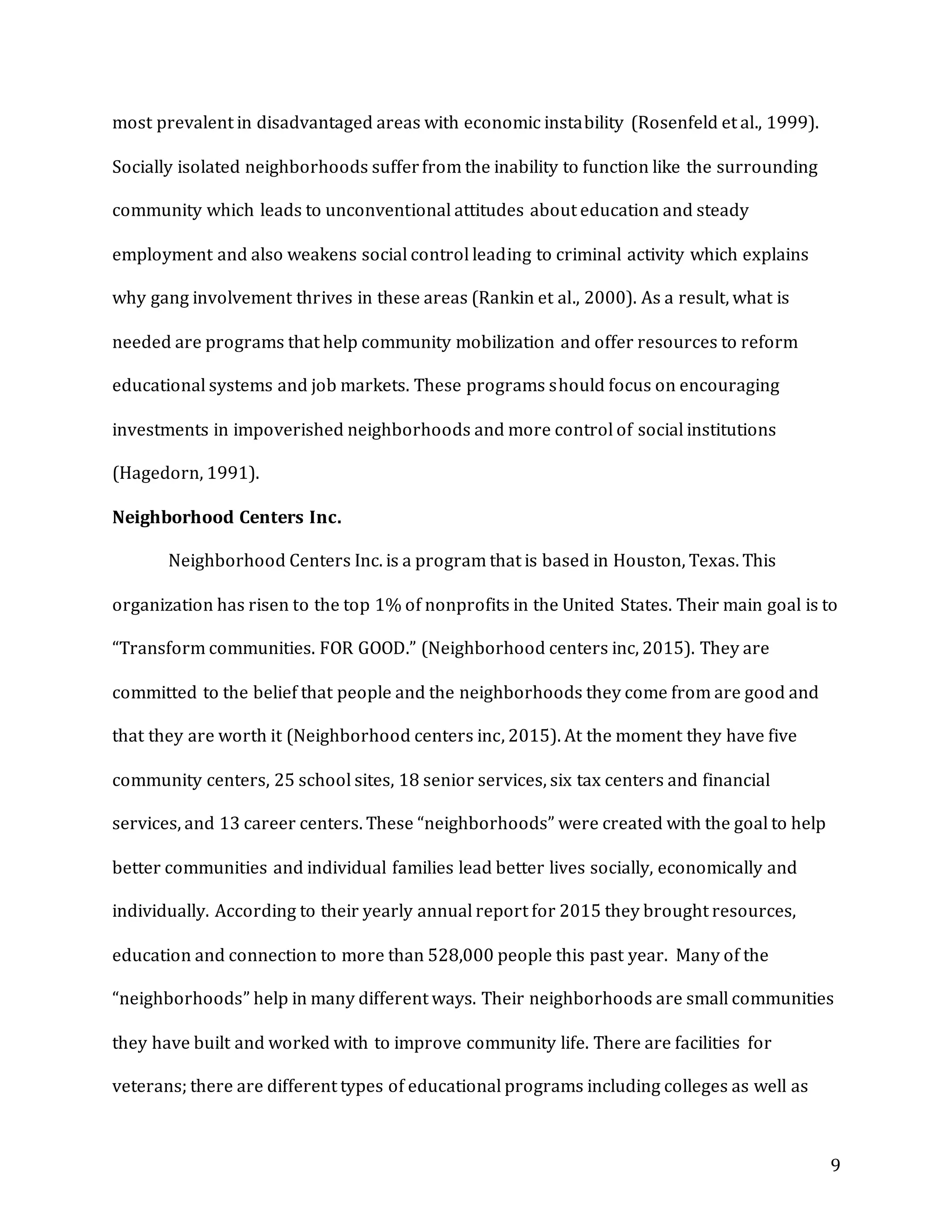
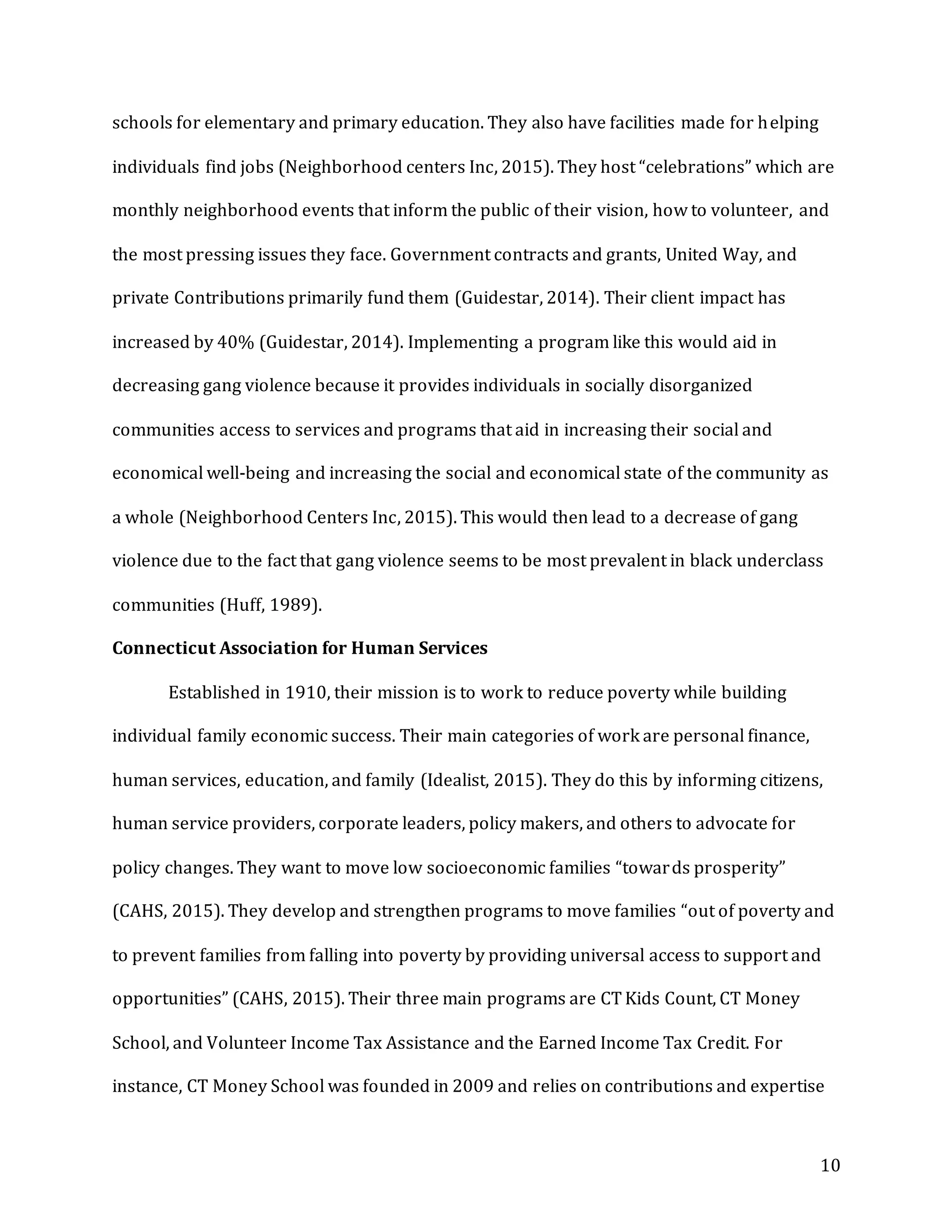
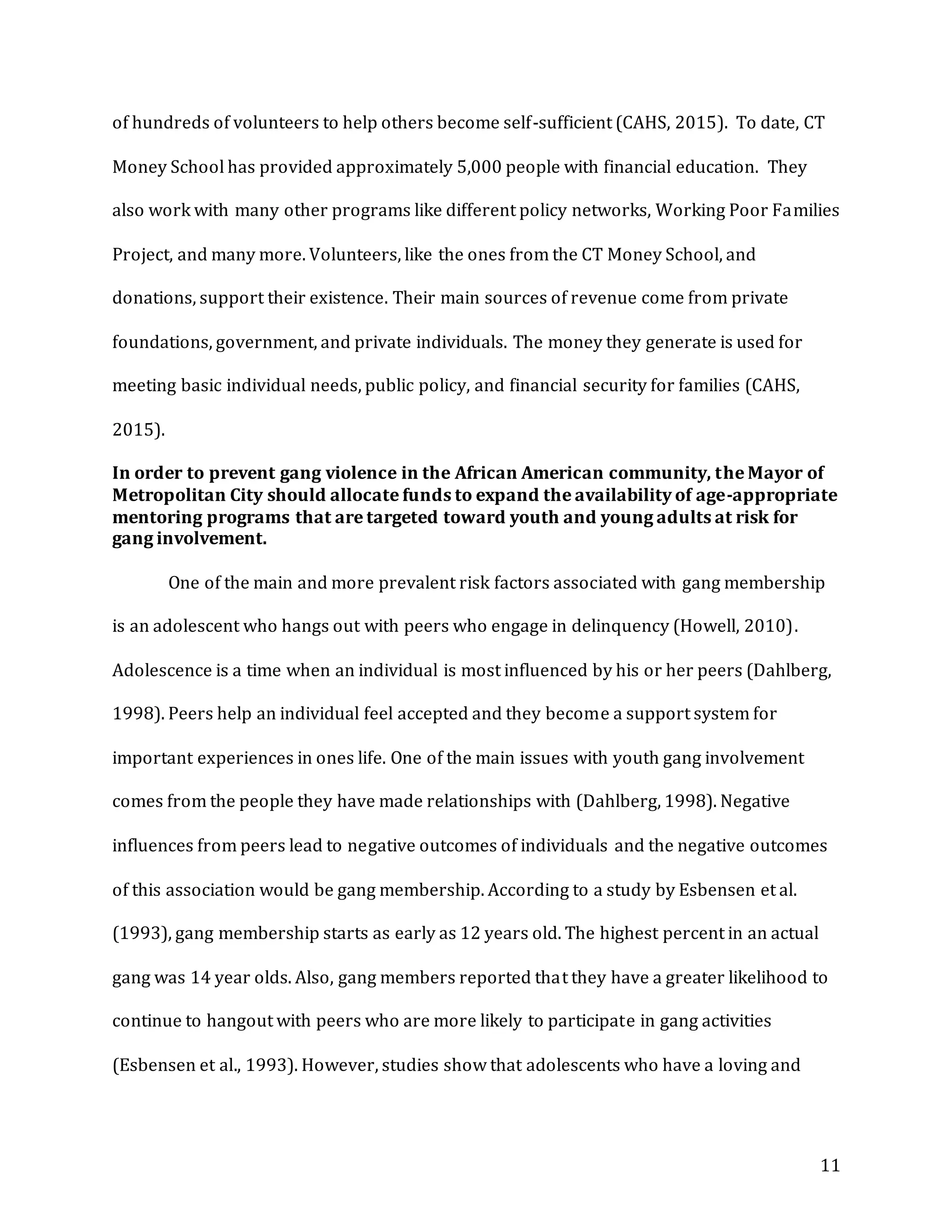

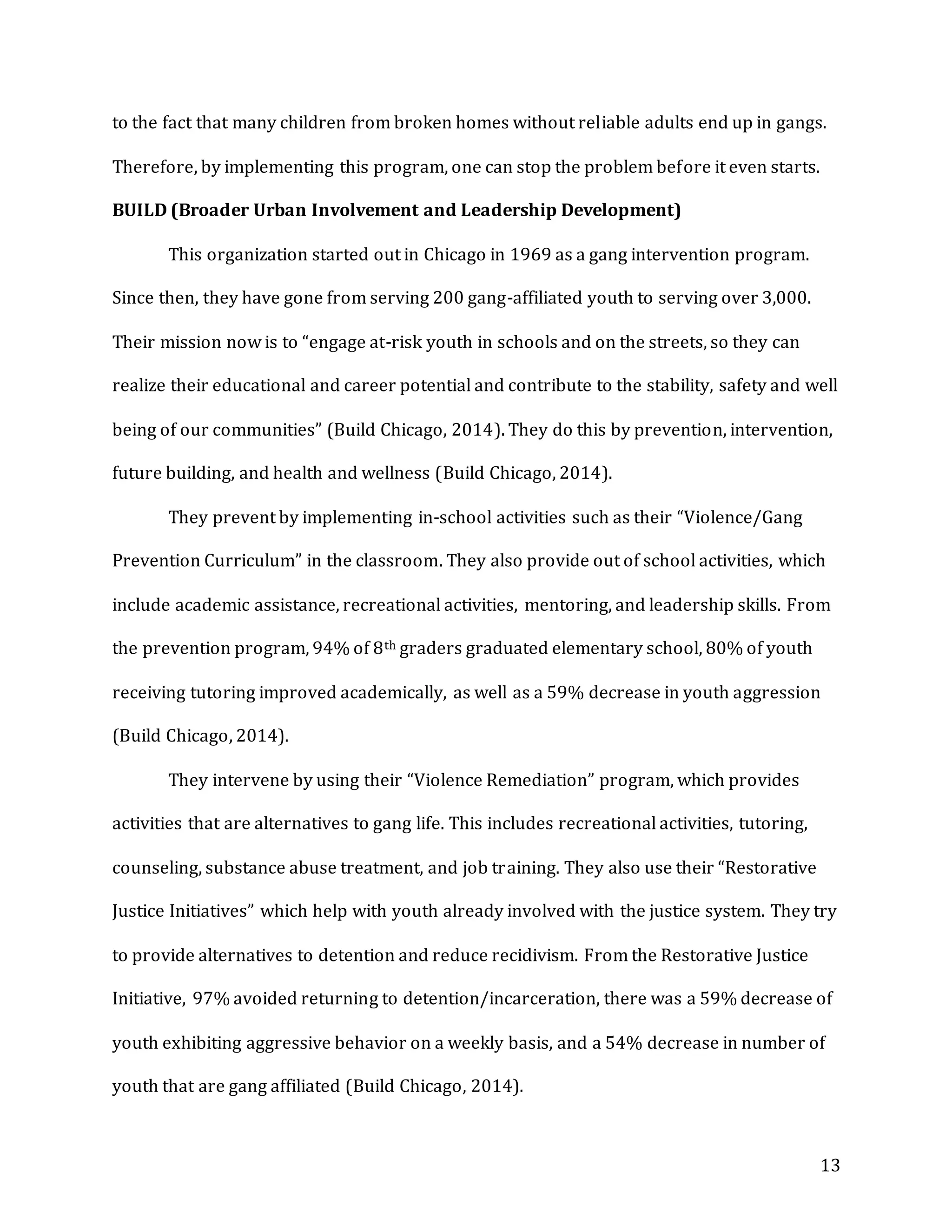
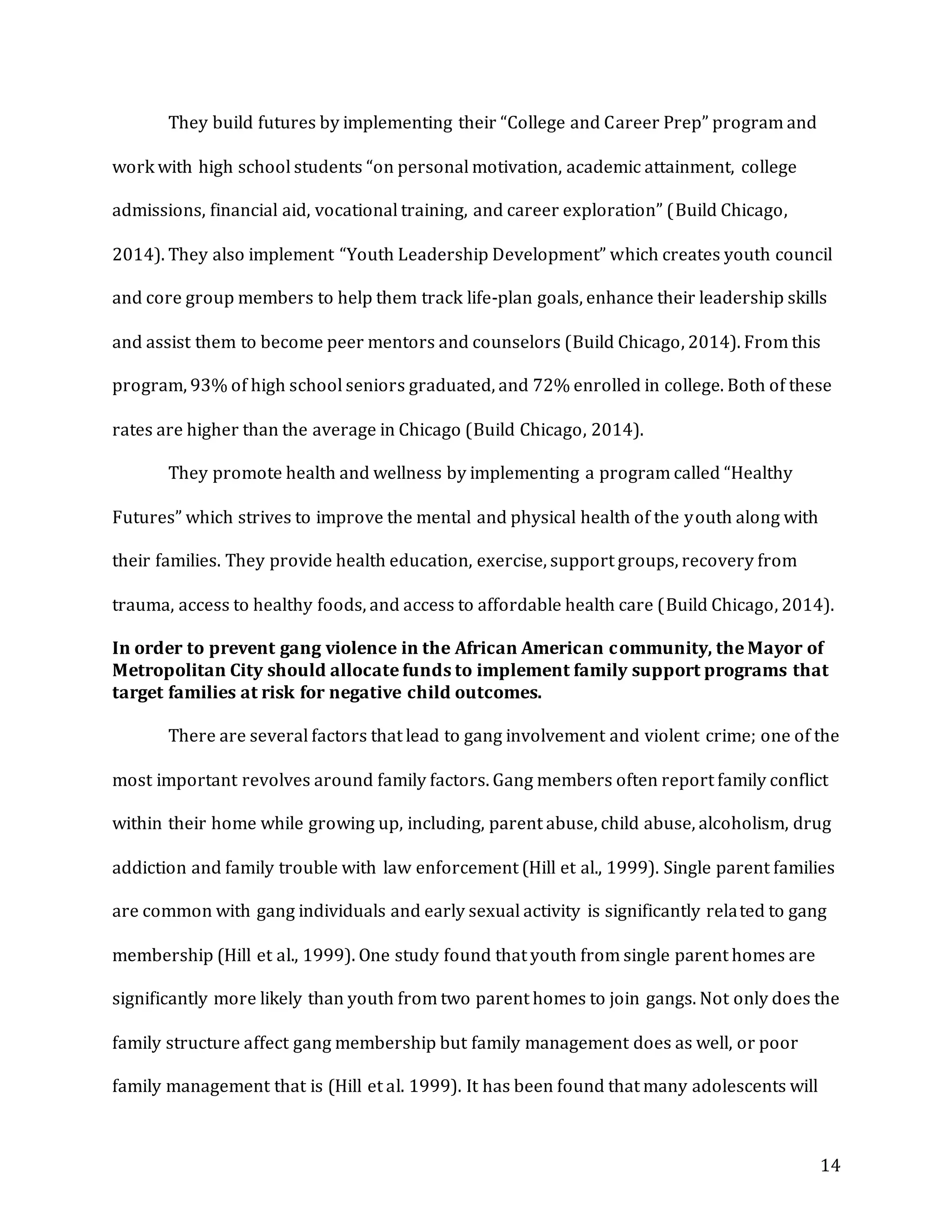


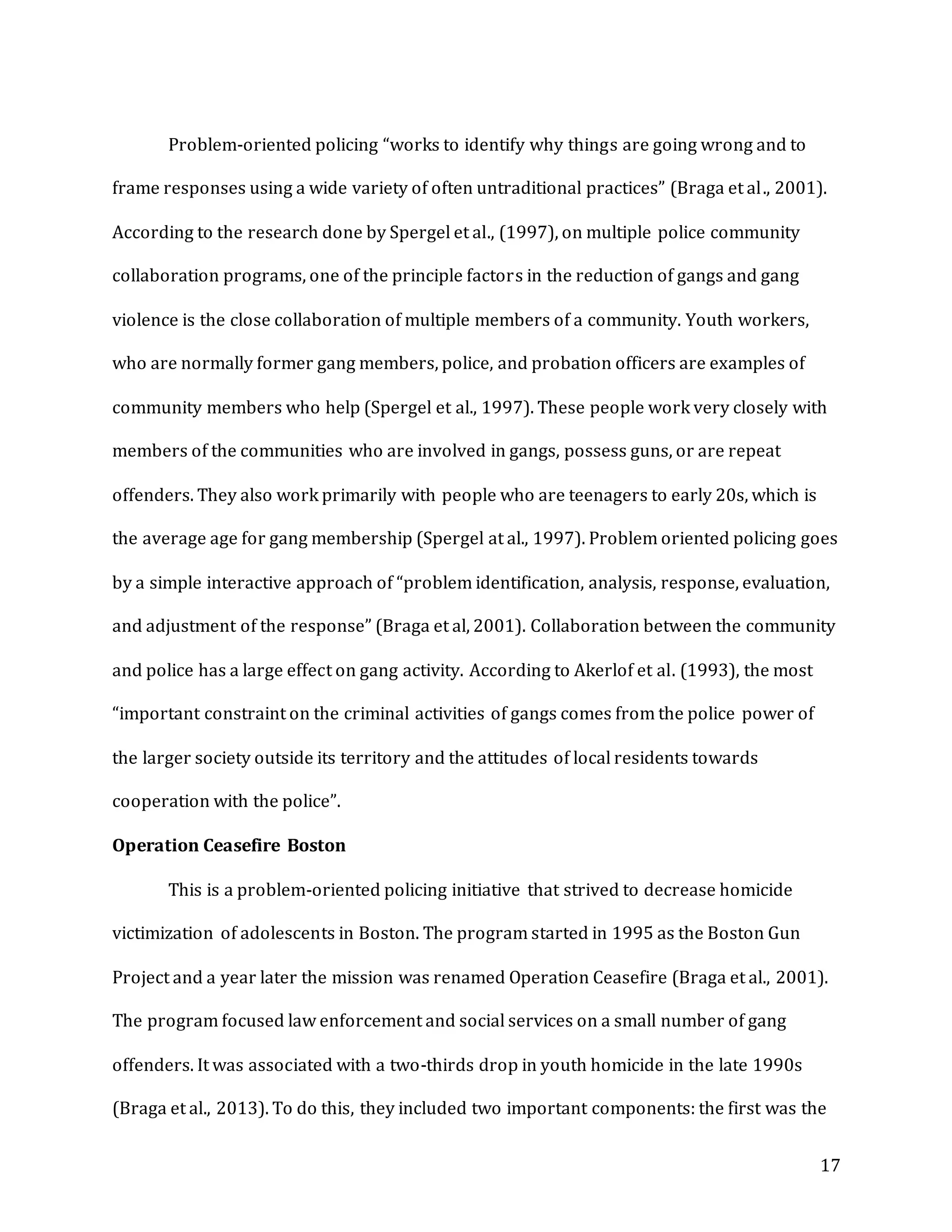
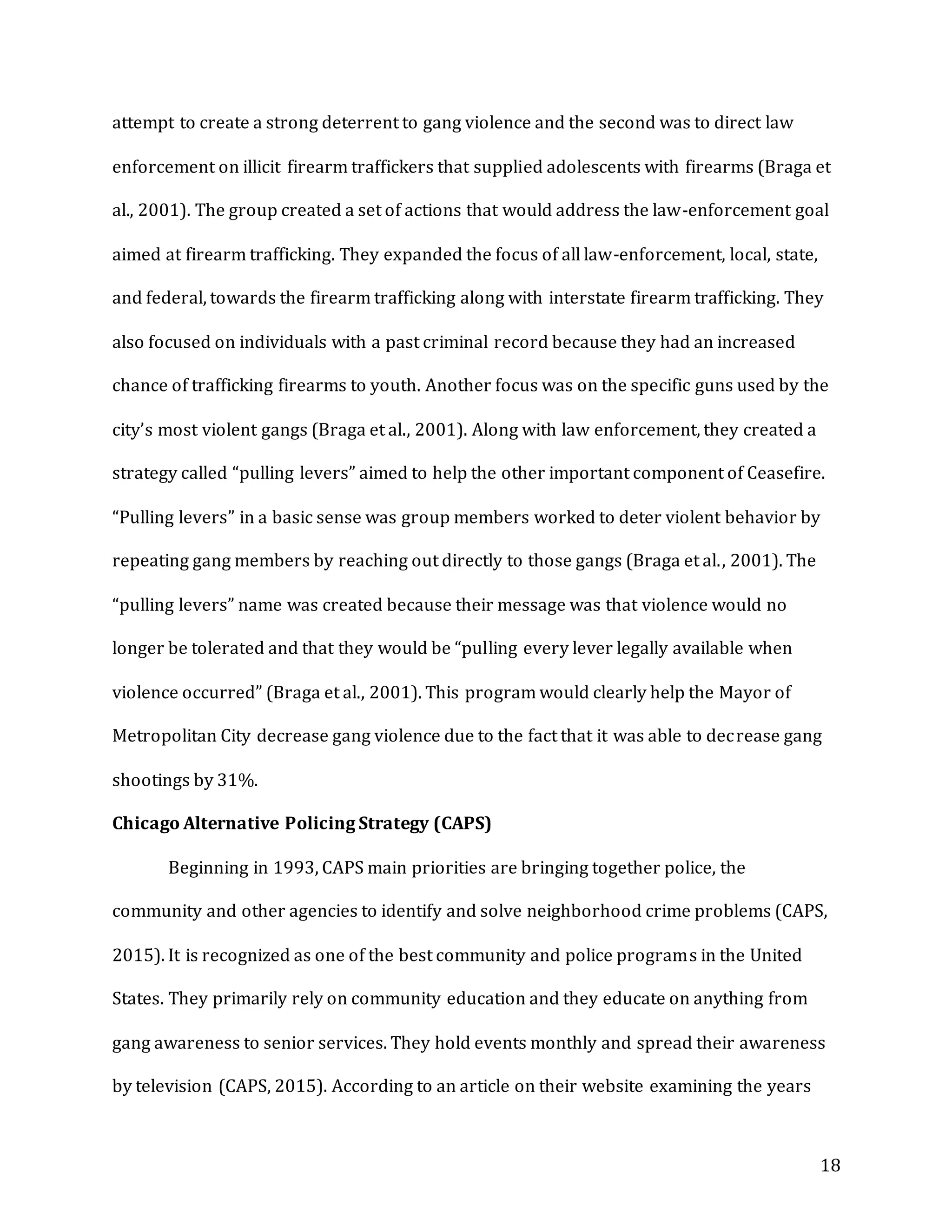

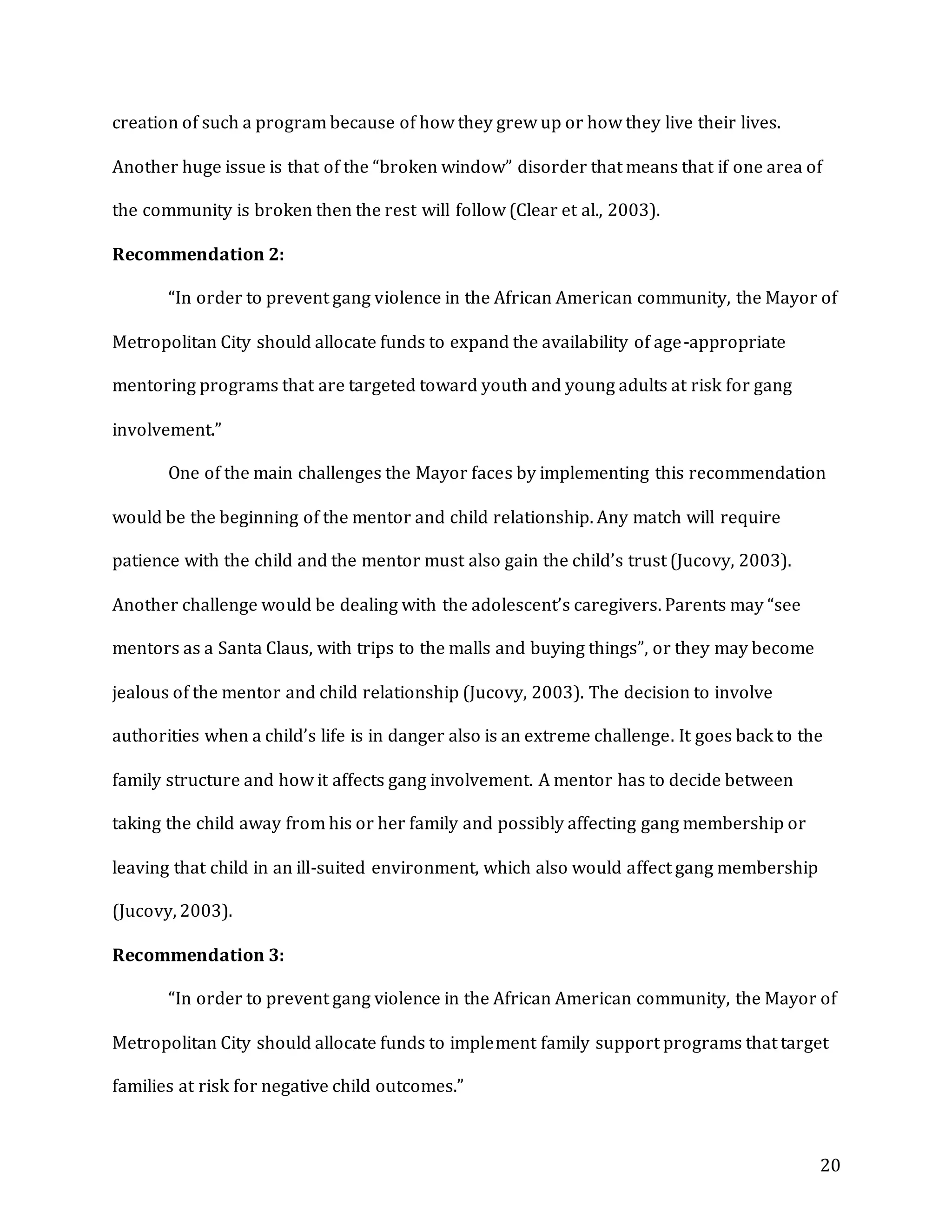

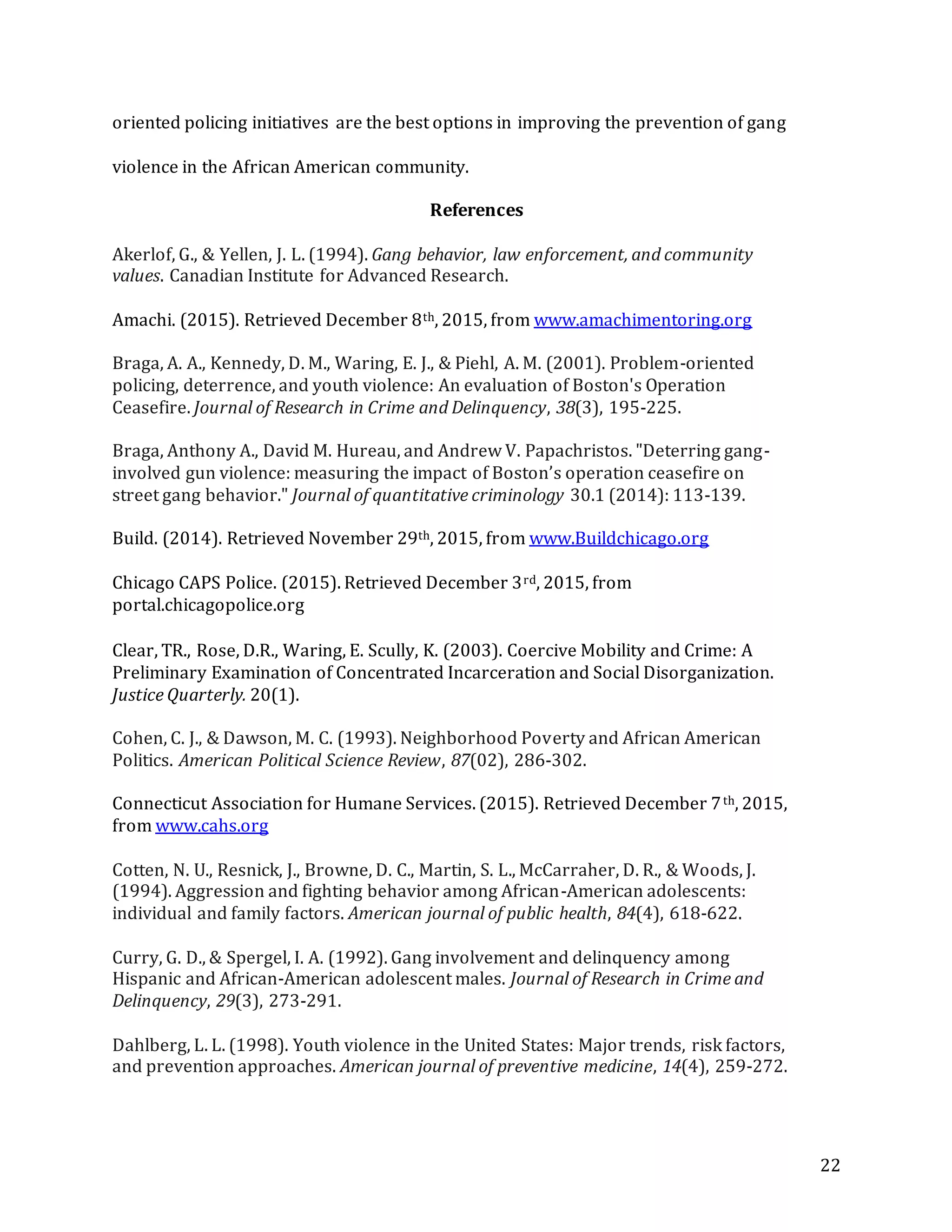
![23
Department of Justice. (2015). Retrieved November 20th, 2015, from
www.justice.gov
GuideStar. (2014). Retrieved November 20th, 2015, form
www.guidestar.org/Home.aspx
Hagedorn, J. M. (1991). Gangs, neighborhoods, and public policy. Social Problems,
38(4), 529-542.
Hammond, W. R., & Yung, B. (1993). Psychology's role in the public health response
to assaultive violence among young African-American men. American Psychologist,
48(2), 142.
Healthy Families Indiana. (2015). Retrieved December 9th, 2015, from
www.In.gov.org
Hill, Karl G., et al. "Childhood risk factors for adolescent gang membership: Results
from the Seattle Social Development Project." Journal of Research in Crime and
Delinquency 36.3 (1999): 300-322.
Howell, J. C., & Moore, J. P. (2010). History of street gangs in the United States. US
Department of Justice, Bureau of Justice Assistance [and] Office of Juvenile Justice
and Delinquency Prevention.
Huff, C. R. (1989). Youth gangs and public policy. Crime & Delinquency, 35(4), 524-
537.
Idealist. (2015). Retrieved December 8th, 2015, from www.idealist.org
Jankowski, M. S. (1991). Islands in the street: Gangs and American urban society. Univ
of California Press.
Jucovy, L. (2003). Amachi: Mentoring Children of Prisoners in Philadelphia.
National Gang Threat Assessment-Emerging Trends. (2011). Retrieved December 1st,
2015, from www.fbi.gov
Neighborhood Centers Inc. (2015). Retrieved November 20th, 2015,
fromwww.neighborhood-centers.org
Race, Crime, and Justice: A Reader. Routledge, 2005.
Rankin, B. H., & Quane, J. M. (2000). Neighborhood poverty and the social isolation of
inner-city African American families. Social Forces, 79(1), 139-164.
Rosenfeld, R., Bray, T. M., & Egley, A. (1999). Facilitating violence: A comparison of
gang-motivated, gang-affiliated, and nongang youth homicides. Journal of](https://image.slidesharecdn.com/c5cd2218-3b72-4570-b6d1-b190810ead5a-160913013027/75/FINAL-DRAFT-2-23-2048.jpg)
